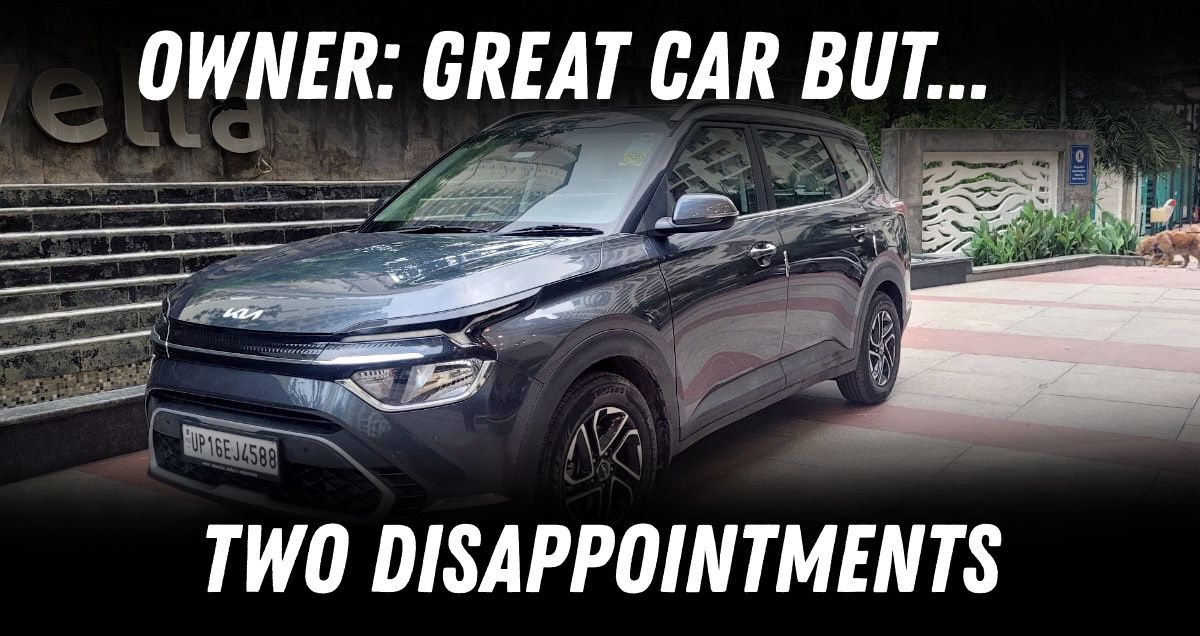Kia Carens 10,000 km update: I Love It But These Two Things Are Rubbish


After owning a Maruti Suzuki Ertiga for over 12 years and clocking more than 1,60,000 km with barely any issues, upgrading to a new car was a big decision for me. The Ertiga was everything I needed: reliable, comfortable, spacious and efficient. Highway mileage was a consistent 17 to 18 km per litre, and even in the city, it gave around 12 km per litre. Beyond regular servicing, the only real fixes were a change of brake pads and a rusted fuel tank. It was, in every sense, a no-fuss family car.
But by 2024, it was time for a change. I wanted something more refined but equally practical. I test-drove four vehicles: the XUV700, MG Hector Plus, Maruti Suzuki Ertiga and Kia Carens. I was specifically looking for a petrol automatic with a good boot, since I use a wheelchair and carry a ramp, and those two things take up significant space. That is where the XUV700 and Hector Plus were immediately ruled out. Their boot space was inadequate when combined with family luggage.
The Kia Carens stood out with its large, accessible boot and practical layout. The variant I chose was the Prestige Plus DCT Turbo Petrol, and it ticked a lot of boxes for me. The legroom in the second row was actually better than my Ertiga, which was surprising and welcome. It had more power, a smooth ride and a fast-shifting gearbox that made highway driving effortless. I also wanted an easy-to-use automatic and a good reverse camera, something my wife, who also drives the car, would find useful. On those fronts, the Carens edged out the Ertiga too.
Now, after a year of ownership and several long trips, I can confidently say I am very satisfied. On the highway, the Carens cruises at 100 plus km per hour with the engine purring at just 1600 to 1700 rpm. It is quiet and composed. The mileage is around 15 km per litre, slightly less than the Ertiga, but that is expected given the increase in power.
What truly blew me away, though, is the suspension. Travelling in the Carens is an entirely different experience. A four-hour journey in the Carens feels as refreshing as a two-hour drive in the Ertiga. It is less fatiguing, more stable and noticeably more comfortable. This mattered a lot to me, especially with family road trips. On one of our recent holidays to Bir [Himanchal Pradesh], we were 5 adults who travelled with a full load; my wheelchair, ramp, a shower chair, two sets of luggage, laptops and more. The Carens swallowed it all without complaint.
But no car is perfect. And while I love my Carens, two things are outright disappointing.
First, the music system. It is honestly terrible. There is no bass, voices sound thin and muddy, and there is zero separation between instruments. It is worse than a cheap one-thousand-rupee Bluetooth speaker. In fact, we now carry my Bose SoundLink on long trips to make up for it, and that alone should say enough.
Second, the headlights are shockingly weak. The throw is poor and visibility at night is average at best. For a car that cost me 18.63 lakh rupees on-road, and is the second-highest variant in the lineup, I expected better. It is a known issue with Korean brands. They often focus on cosmetic and feature-heavy gimmicks while skimping on essentials like lighting and audio quality. These might seem minor on paper, but they affect day-to-day usability a lot more than some of the so-called premium features.
That said, the Carens still has small touches I have come to appreciate, like the cool air vents in the centre cup holders. I did not know they were there when I bought the car, but I have found them genuinely useful.
To sum it up, the Kia Carens has been a fantastic upgrade overall. It is spacious, refined and extremely comfortable over long journeys. But if you care about music and drive a lot at night, be prepared to spend extra on aftermarket upgrades. Because in those two departments, the Carens simply does not cut it.